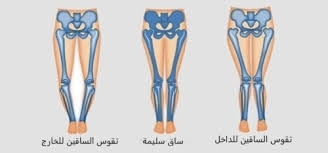
Bowed Legs in Children with Dr. Mohamed Fawzy Ibrahim
Published on: 2025-06-19 | Written by: Dr. Mohamed Fawzy Ibrahim, specialist in orthopedics, fractures and pediatric deformities
Bowed legs are among the most common skeletal deformities seen in childhood and can cause concern for parents regarding proper bone development. Dr. Mohamed Fawzy Ibrahim, Specialist in Orthopedic Surgery, Fractures, and Pediatric Deformities, explains that early diagnosis plays a crucial role in preventing complications and planning effective treatment.
What Are Bowed Legs?
Bowed legs refer to a noticeable curvature of the leg bones, making the legs appear misaligned when the child stands. This curvature may be outward (bow legs) or inward (knock knees), typically becoming noticeable after the age of two.
Causes of Bowed Legs in Children:
According to Dr. Mohamed Fawzy, common causes include:
-
Congenital deformities: Structural issues during fetal development.
-
Rickets (Vitamin D deficiency): Leads to soft bones and curvature.
-
Excess weight: Increases stress on the leg joints during growth.
-
Hip or joint disorders.
-
Infections or inflammation in the joints.
When Should You Be Concerned?
Dr. Mohamed Fawzy stresses that mild bowing can be normal and resolve with growth, but parents should consult a doctor if:
-
Bowing persists beyond age 3.
-
The legs appear asymmetrical.
-
The child experiences pain or walking difficulty.
-
There's a family history of similar conditions.
Diagnosis of Bowed Legs:
Dr. Mohamed Fawzy performs diagnosis through:
-
Detailed physical examination.
-
X-rays to assess the angle of curvature.
-
Blood tests for vitamin levels and bone density, if necessary.
Treatment Options:
Dr. Mohamed Fawzy states that treatment depends on the underlying cause and severity:
-
Conservative Treatment:
-
Vitamin D and calcium supplements in cases of rickets.
-
Regular follow-ups to monitor natural correction.
-
Exercises to strengthen leg and hip muscles.
-
-
Surgical Treatment:
-
Recommended in severe cases or when conservative methods fail.
-
May involve internal plates or fixators to realign the bones.
-
Home Care Tips from Dr. Mohamed Fawzy:
-
Ensure proper nutrition and sunlight exposure.
-
Monitor the child's walking pattern regularly.
-
Seek medical advice if any deformity is noticed.
Conclusion:
Dr. Mohamed Fawzy emphasizes that early detection of bowed legs ensures optimal treatment outcomes. Prompt action minimizes the need for surgery and significantly improves the child’s quality of life.

